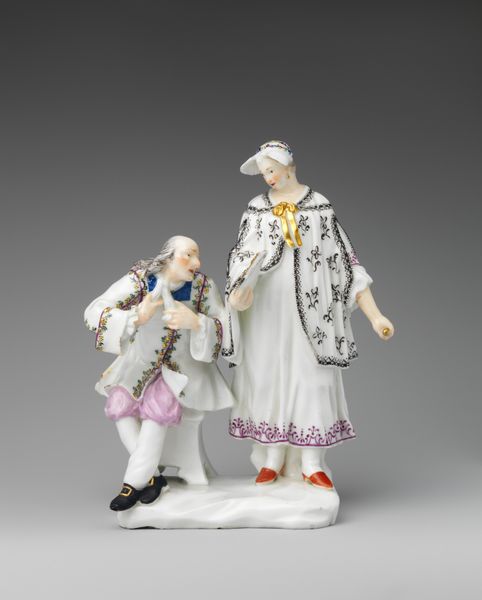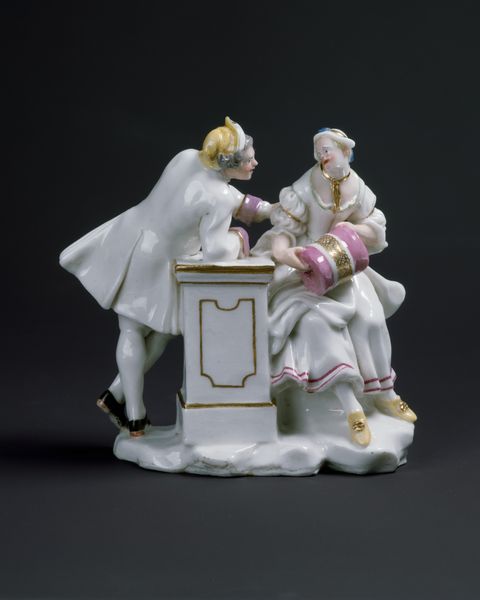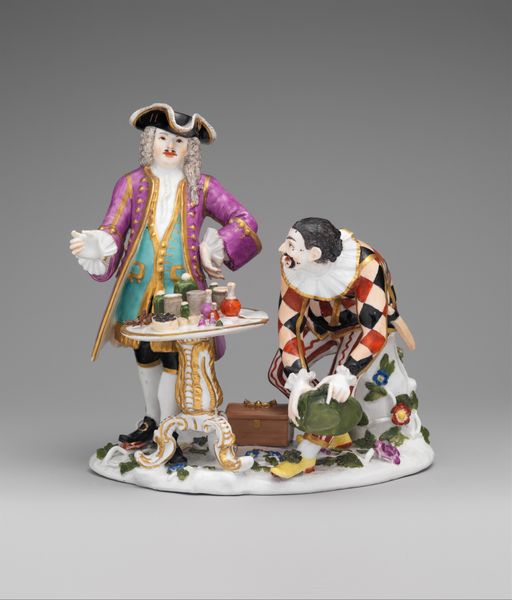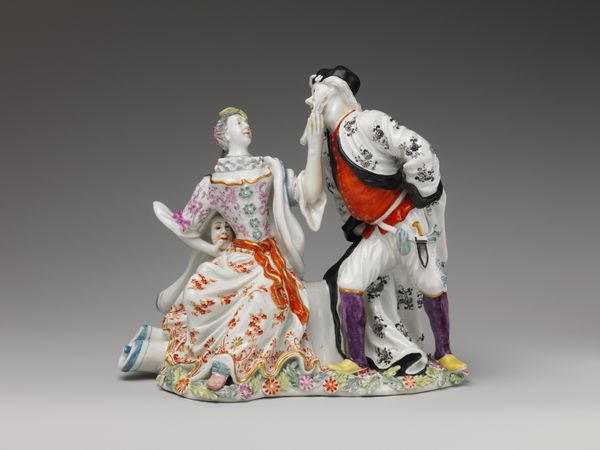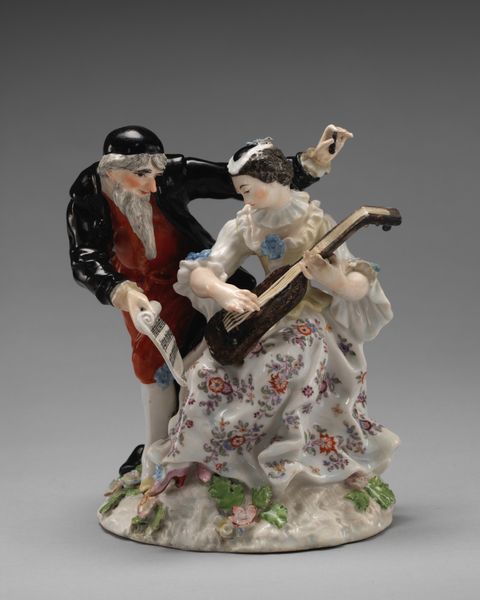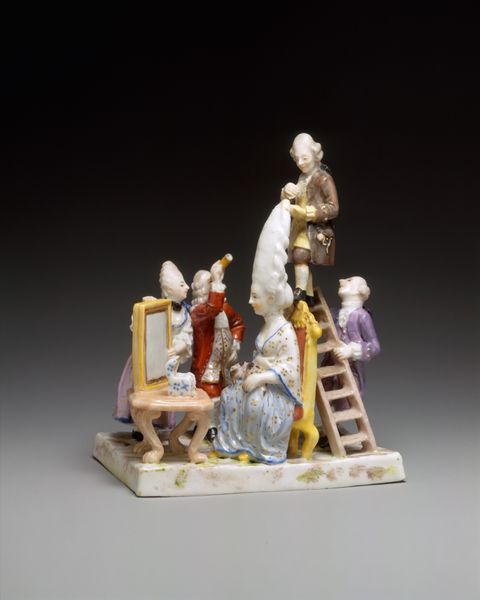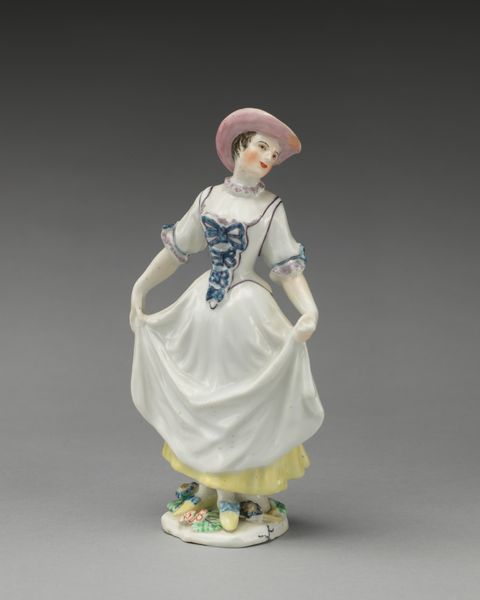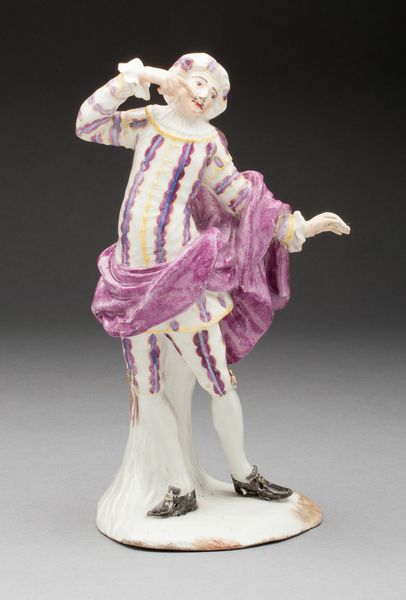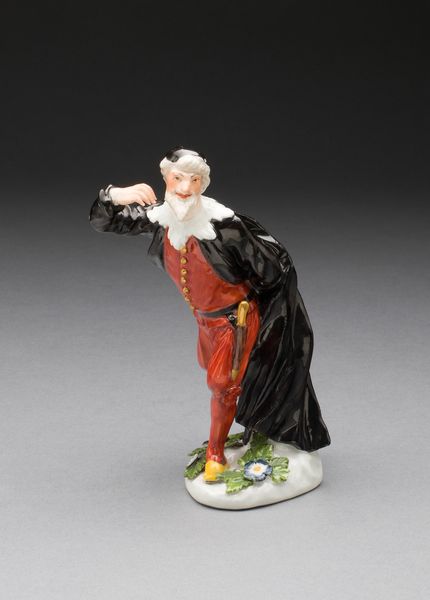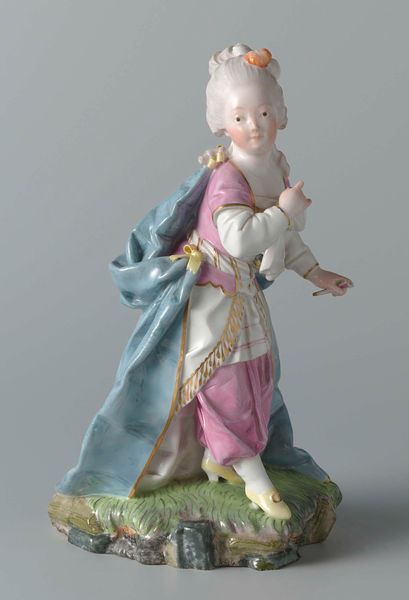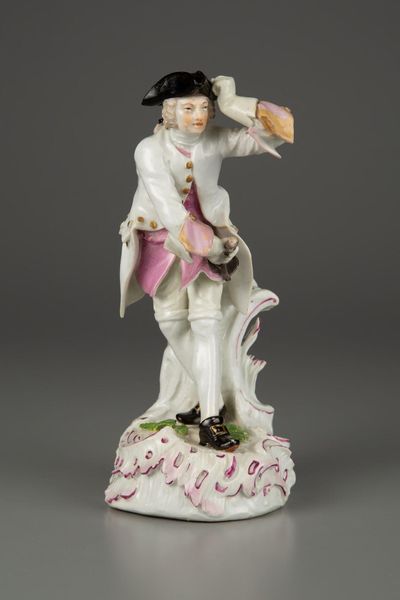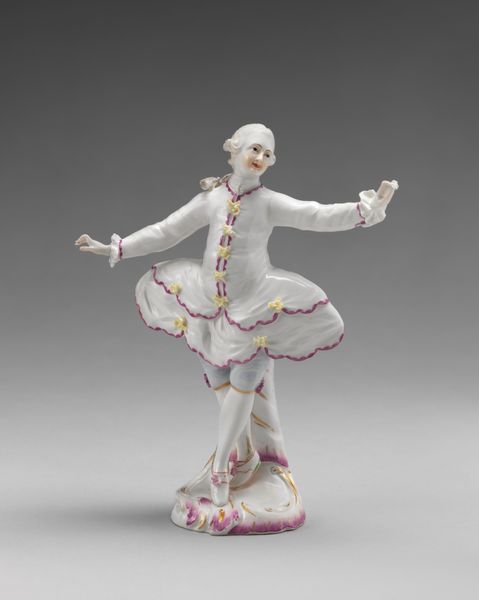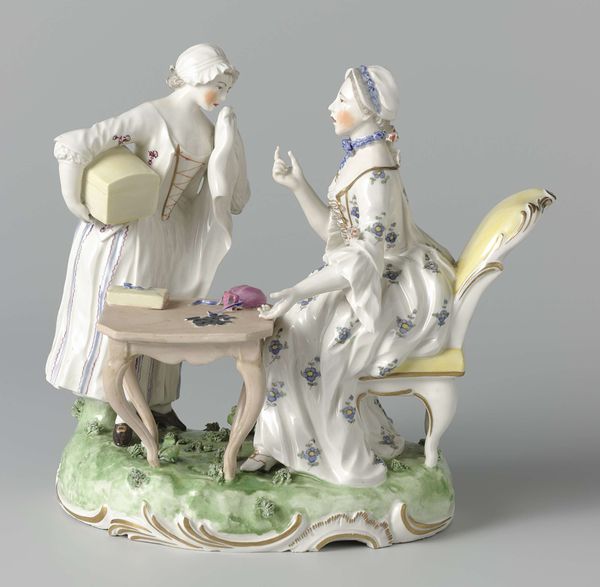
ceramic, porcelain, sculpture
#
sculpture
#
ceramic
#
porcelain
#
figuration
#
sculpture
#
group-portraits
#
decorative-art
#
rococo
Dimensions: Height: 5 7/8 in. (14.9 cm)
Copyright: Public Domain
Editor: This striking porcelain sculpture, "Pas de Deux," made around 1755 to 1768 by the Ludwigsburg Porcelain Manufactory, captures a dynamic dancing duo. It’s incredibly detailed. I’m curious about your thoughts on it, what stands out to you? Curator: What interests me most is not just the surface-level elegance, but how its production reflects the social and economic landscape. Porcelain itself, especially during this period, was a luxury good. Its production was highly controlled, a symbol of wealth and power. Considering its materials— where would the Ludwigsburg manufactory have sourced its porcelain, its pigments, and how might labor have been organized to create this work? Editor: That's a great question, I hadn’t thought about where those raw materials would have originated. How does focusing on production change how we interpret the artwork itself? Curator: It invites us to think beyond the aristocratic subject matter and consider the human effort and global networks that made such displays of opulence possible. Did the makers identify with this artwork or where they simply executing commissions? Think about the elaborate costumes – were they simply aesthetic flourishes or did they have some connection with societal hierarchies and values of the time? Editor: I see what you mean. It makes you consider what conditions these artisans worked under to create these luxury objects. This piece becomes not just decorative, but also an indication of wealth distribution in the Rococo Era. Curator: Exactly! And think about where the item was meant to be placed. Understanding where this piece would have lived—a palace display, perhaps?—adds another layer to its meaning. How was porcelain used to demonstrate status and taste within elite circles? Editor: So, rather than just seeing a pretty dancing couple, we're also looking at the story of its making and its place in a broader network of production and consumption. Thank you, that shifted my perception entirely. Curator: Indeed! Material analysis pushes us beyond aesthetic appreciation into deeper socioeconomic insight.
Comments
No comments
Be the first to comment and join the conversation on the ultimate creative platform.
